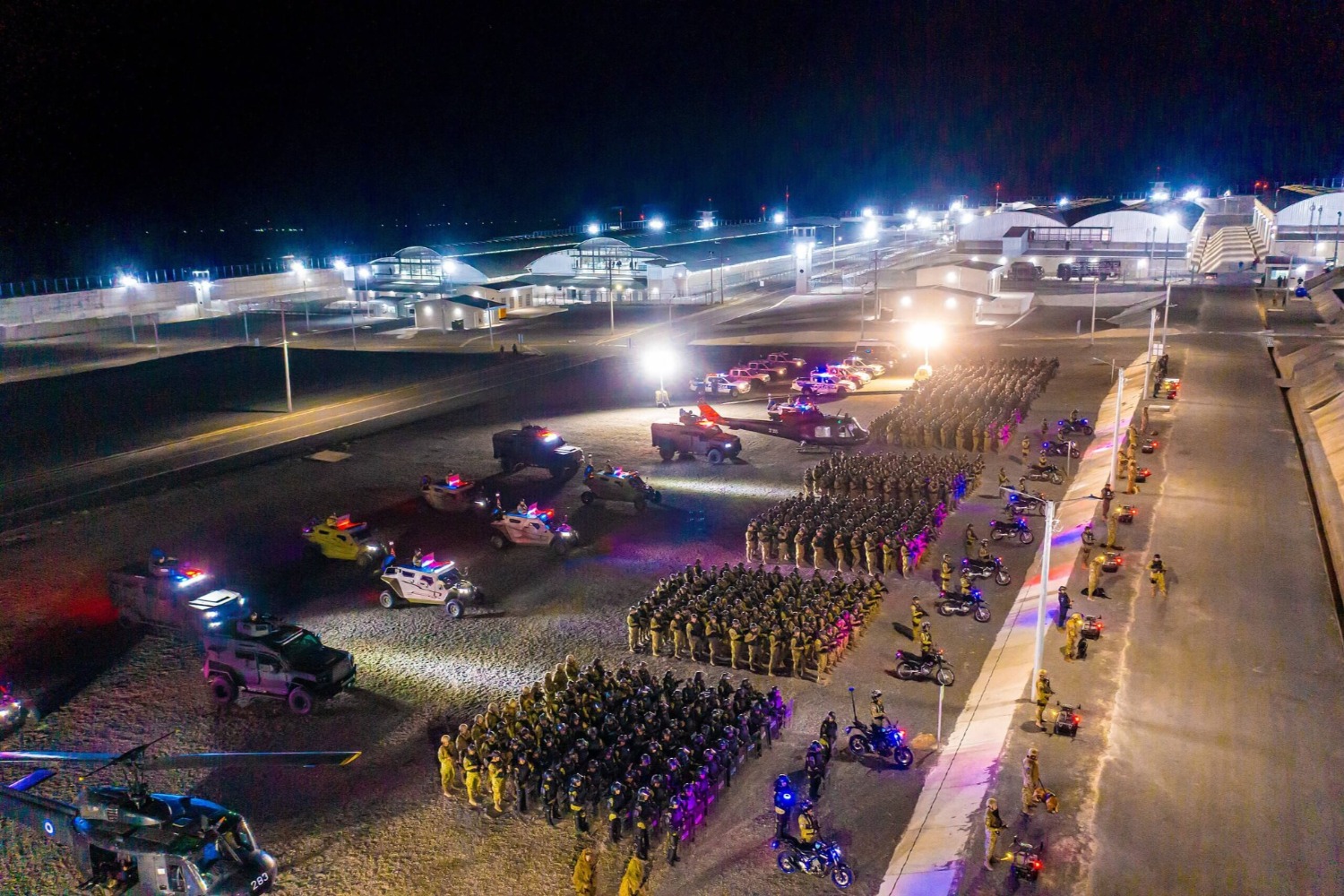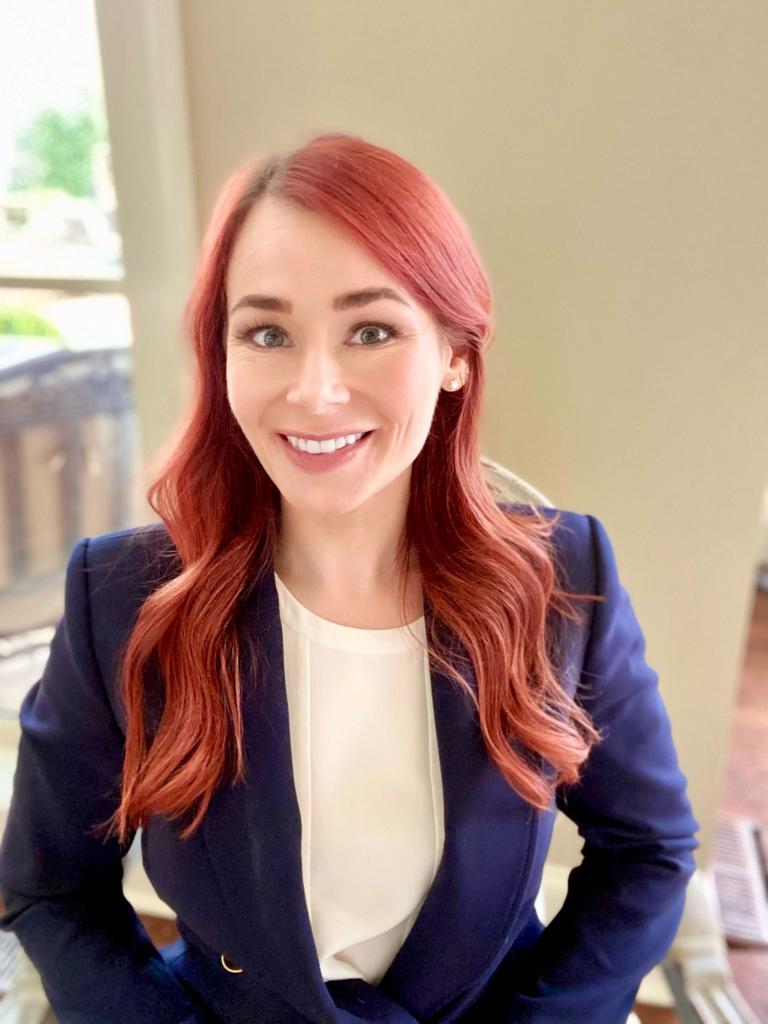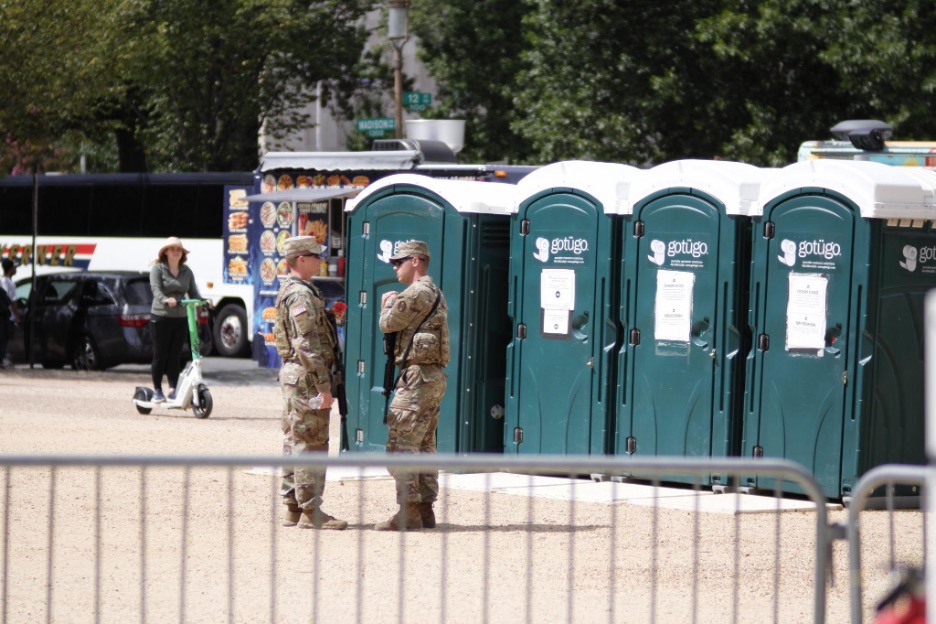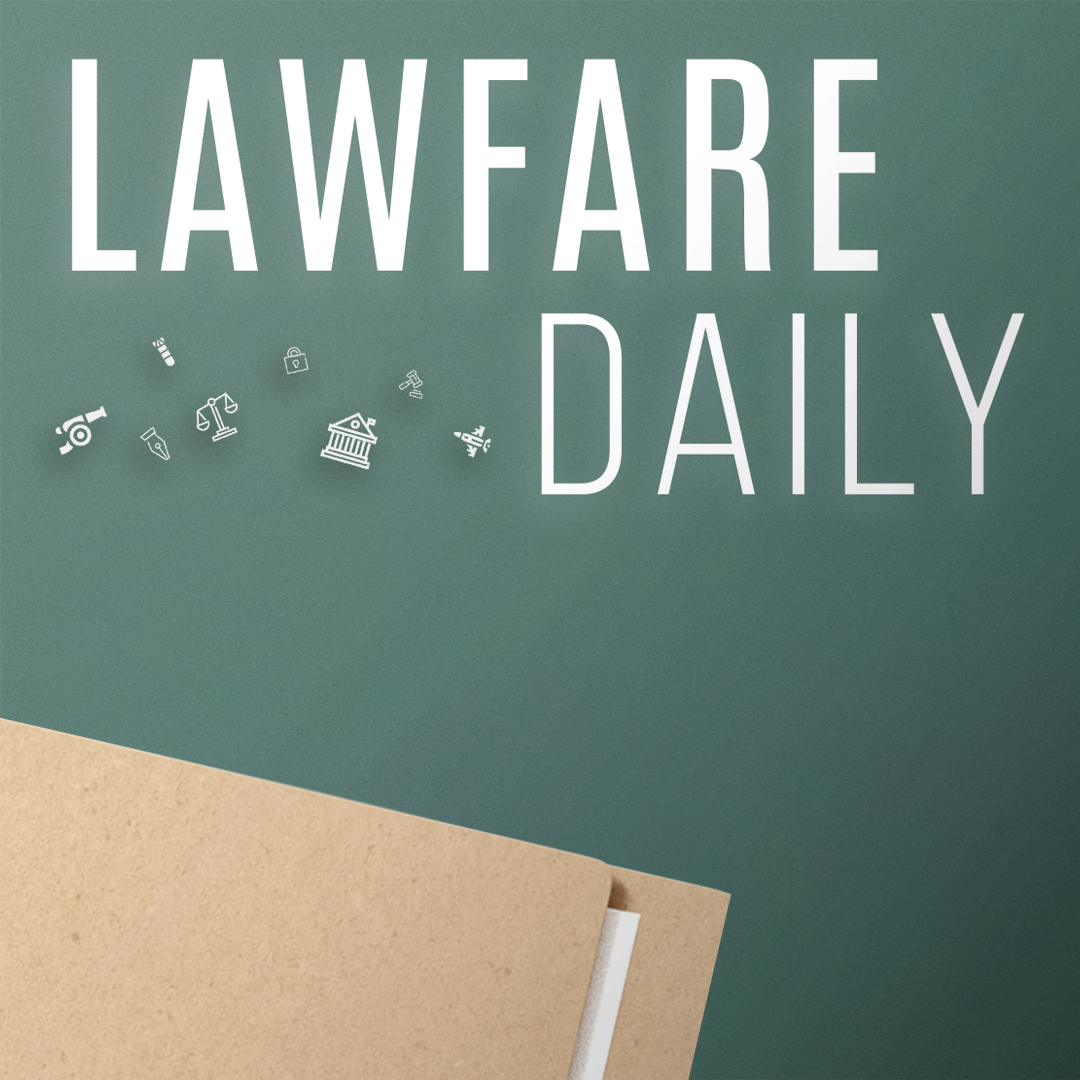Our Reporters’ Notes on the May 7 Hearing in the J.G.G. Case
The judge seemed receptive to a class action on behalf of aliens sent to CECOT under President Trump’s Alien Enemies Act proclamation.

Published by The Lawfare Institute
in Cooperation With

U.S. District Judge James Boasberg of Washington, D.C. held a late hearing, beginning at 5 p.m. on May 7, to hear motions in the case of J.G.G. v. Trump.
The suit, filed in the early morning hours of March 15, was originally brought as a putative class action by five Venezuelans who feared being summarily removed from the country pursuant to President Trump’s Alien Enemies Act proclamation. For confidentiality, the plaintiffs have been identified only by their initials.
The case has morphed since then. On the evening of March 15, the putative class members, except the five named plaintiffs, were, in fact, removed and imprisoned in El Salvador’s Terrorism Confinement Center, or CECOT. On April 16, Judge Boasberg found probable cause to believe that those removals were carried out in criminal contempt of his orders. The contempt proceedings have been administratively stayed by the U.S. Court of Appeals for the D.C. Circuit pending appeal.
After the U.S. Supreme Court ruled that the case’s claims had to be brought through habeas corpus actions filed in the districts where the aliens were confined, the original five named plaintiffs filed two new habeas class actions in the districts of their detention facilities: one in the Southern District of New York (G.F.F. v. Trump) and another in the Southern District of Texas (J.A.V. v. Trump).
However, on April 24, the same attorneys who brought the original J.G.G. case filed an amended complaint on behalf of two new “subclasses”; sought certification of those classes; and moved for a preliminary injunction. One proposed subclass was the group of Venezuelans already removed to CECOT—approximately 137 people. The other subclass would consist of Venezuelans whom the government deems to be members of the criminal gang Tren de Aragua—the group susceptible to Trump’s Alien Enemies Act proclamation—who are currently in criminal custody in state or federal prisons in the United States, but who are vulnerable to being removing under the proclamation at any moment.
The government opposed the preliminary injunction and opposed the proposed class certifications. What follows comes from reporters’ notes. It is not a transcript.
***
Judge Boasberg takes the bench at about 5 p.m. He had only left the bench about ten minutes earlier, where he had been, for most of the day, conducting a long-running bench trial concerning alleged antitrust violations by Facebook: Federal Trade Commission v. Meta.
Counsel give their appearances. The lead plaintiff’s lawyer is Lee Gelernt, of the American Civil Liberties Union. His colleague Ashley Gorski will handle a portion of the presentation.
The lead attorney for the Department of Justice today is Deputy Associate Attorney General Abhishek Kambli, who just joined the department in February, moving over from the Kansas Attorney General’s Office. Kambli says he’s standing in for Drew Ensign, the deputy assistant attorney general for immigration litigation, who joined the department in January. Kambli’s name does not appear on any of the relevant briefs today, but he did stand in for Ensign once before in the proceedings, on March 17.
Judge Boasberg starts with questions about the structure of the new complaint.
Let’s talk about the classes, he says. It seems to me that the Supreme Court ruling vacated my minute orders. One of those was the certification of the class. So it seems to me that that is likely vacated. Therefore, we need to start again.
So my question for you is: What’s the point of keeping the broader overall class, as opposed to just the two subclasses? What relief could you seek for this overall class anymore, given the Supreme Court’s ruling?
Gelernt apologizes for the confusion and says: We are not, in fact, seeking a class for the entire thing anymore.
Okay, so let's not talk about “subclasses,” Boasberg says. They're classes. Similarly, the original named plaintiffs—they're not part of those classes, right?
Gelernt agrees that the original five named plaintiffs are no longer involved.
Turning to the second of the two proposed classes—the one for aliens currently confined in the United States due to crimes allegedly committed—Boasberg asks: Why isn't Padilla a problem for you here? (He’s referring to Rumsfeld v. Padilla [2004], which established that prisoners are generally supposed to bring habeas corpus actions in the district where they’re confined.) None of these class members is confined in the District of Columbia. (The one named plaintiff for this class, T.C.I., is in state custody in New Jersey.)
Right now, Gelernt responds, we don't know where they're going to be confined by immigration authorities. He’s referring to the fact that if and when federal immigration authorities take custody of those prisoners, it’s not yet known which federal facilities they’ll be placed in.
But my co-counsel will address that, Gelernt says, ceding the dais to Gorski.
She explains that the class members in criminal confinement are seeking to challenge their future confinement in federal custody. So the defendants here—the heads of the Department of Homeland Security and the Department of Justice, for instance, who are presumed to live here in Washington, D.C.—will have future legal custody over the custody class.
What we have is like Braden, Gorski says, referring to Braden v. 30th Judicial Circuit Court of Kentucky (1973). Braden was able to bring habeas in Kentucky even though he was detained in Alabama.
But he was going to be detained in Kentucky, Boasberg says. Boasberg’s point is that these defendants will likely never be detained in Washington, D.C.
What's important, argues Gorski, is who the future legal custodians will be. What matters is future confinement, not current.
Boasberg wants to talk about the other proposed class now—the one composed of CECOT prisoners. The key issue with that class is whether the defendants still have constructive custody over them, now that they’re in an El Salvador prison.
One of the questions I'm wrestling with, says Boasberg, is: Should we have some jurisdictional discovery? Do you want discovery and, if so, what do you want to learn?
Resuming the dais, Gelernt says: We do already have enough discovery to have you order the government to facilitate their return. The government hasn't disputed that there was payment and that they were sent to CECOT. If you think discovery is appropriate, we could do that, but the only thing I’d caution is: We’ll run into a lot of obstacles. If Your Honor wants to start with discovery, Gelernt continues, I’d suggest starting with interrogatories and requests for production—not depositions. But I think your honor already has enough facts to find constructive custody, Gelernt emphasizes.
Now Boasberg asks Deputy Associate Attorney General Kambli to address the question.
Kambli says the issue of constructive custody boils down to whether the United States has agency over the El Salvador prison authorities, which, he says, it does not.
But Boasberg asks Kambli: Supposing Boasberg finds there is constructive custody, would Kambli concede that venue would then properly exist in Washington, D.C.?
Yes, your Honor, Kambli says.
Alright, says Boasberg, so what we have to do is figure out constructive custody. In looking at constructive custody, why don’t we start with you saying that there’s no reason to believe that the U.S. could obtain the release of any petitioner merely by asking. But didn't the president say just last week that he could secure the return of Mr. Abrego Garcia simply by picking up the phone and asking the president of El Salvador to release him? Is the president not telling the truth? Or could he secure the release of Abrego Garcia?
Your Honor, says Kambli, this just gets into what I wanted to talk about, which is two different concepts: Influence does not equate to constructive custody.
Why don't we start with my question, says Boasberg. Was the president telling the truth when he said he could pick up the phone and have Mr. Abrego Garcia released, or not?
That goes towards the president's belief about the influence that he has, Kambli responds. The question for constructive custody rests on whether the decision ultimately lies with El Salvador or the United States. The fact that El Salvador gets a say negates the constructive custody.
For example, continues Boasberg, you’ve got the El Salvador vice president, when speaking to Senator Van Hollen, saying that the issue has to be solved by the U.S. and that Abrego Garcia’s release is up to the U.S. So that sounds like a lot more than influence.
So that goes towards whether El Salvador has a say at all or not, replies Kambli. If they have some say, that does negate constructive custody.
But also, you wouldn't disagree, Boasberg continues, that in terms of custody, there’s no difference between Abrego Garcia and plaintiffs in this case? (Boasberg’s point may be that Trump has already said he can get Abrego Garcia back. But Boasberg may also be alluding to the fact that the Supreme Court has effectively required the government to “facilitate” Abrego Garcia’s return. Thus, the Supreme Court also appears to have accepted that Abrego Garcia is in the constructive custody of the United States.)
There are some differences, Kambli protests, because Abrego Garcia was in the District of Maryland, so at one point he was housed there. So the issue didn't turn on whether the district of DC had venue—so it's a little bit of a different question in this case.
But in terms of constructive custody, there’s no difference?, presses Boasberg.
There are some nuances, parries Kambli.
In fact, says Boasberg, you didn't dispute the question of custody in front of Judge [Paula] Xinis, did you?
The government has taken the position there that they are not able to return him at this point and that’s been the position, replies Kambli.
But even assuming you hadn't conceded the issue, says Boasberg. What I'm still asking is: What's the difference between the custody that El Salvador holds of Abrego Garcia and here?
It boils down to, in both cases, whether El Salvador has a say before the power to produce can be effectuated, says Kambli.
But that’s why they’re the same, says Boasberg. There’s no way to say Abrego Garcia is in constructive custody but these plaintiffs are not. So, back again to the U.S.-El Salvador relationship. Is the U.S. paying El Salvador to house the migrants?
I do want to be careful here, says Kambli. Here's what I can present. There is no agreement or arrangement whereby the United States maintains any agency or control over the prisoners. There’s no constructive custody. And by that I mean no treaty, binding agreement or non-binding arrangement where El Salvador provides us the constructive custody of the people that we send them. What exists is a letter to El Salvador on the issue of the detention, but that letter does not provide constructive custody to the U.S.
But there's a notice of a four-million-dollar-plus grant to El Salvador, says Boasberg, dated March 22, which notes that the purpose of the grant is to provide funds to be used by El Salvador for its law enforcement needs, which include the cost of detaining the 238 people recently deported to El Salvador, right?
What I can represent, Kambli responds, is that there were grants that were made to El Salvador for law enforcement purposes that can be used for good detention of these individuals. But these individuals are detained under the laws of El Salvador.
Mr. Landau’s declaration—a government submission from Deputy Secretary of State Christopher Landau—you're not saying that's controlling, right?, comments Boasberg. All he says is that El Salvador makes its own sovereign decisions. But that doesn't even apply specifically in his declaration to these people at CECOT, right?
The detention in CEOT is pursuant to El Salvador laws, insists Kambli. And even the plaintiffs have submitted news articles showing that they do have an avenue to challenge their detention. There were news reports of Venezuela sending lawyers to argue in El Salvador for their release.
That seems to go to whether there are other forms of release, parries Boasberg. Now he turns to the statement of White House spokesperson Karoline Leavitt, to the effect that approximately $6 million was being paid to El Salvador to house “these ... terrorists.” So is she wrong?
What I can represent is what I already stated, says Kambli, which is that there were grants provided. Those grants can be utilized to provide for some of the costs for the detention.
Boasberg turns to the statement of Homeland Security Secretary Kristi Noem that CECOT was “one of the tools in our toolkit.” Is she wrong?
I'm not going to necessarily parse out every statement, Kambli says, and sometimes public statements lack the nuance of any given situation.
Is that your way of saying some of these statements just aren’t true?, Boasberg asks.
No, that’s not what I'm saying at all, Kambli politely protests. What I'm just saying is that the question of constructive custody turns on whether we do have the ability to immediately produce them and the evidence before you indicates that we do not.
What’s your thought on further discovery, Boasberg asks Kambli. What you’re telling me—are you willing to provide that in declarations or documents?
We don't believe jurisdictional discovery is necessary at this time, he responds. But I can consult with the State Department. But we believe even the plaintiffs’ conceded avenue for relief—which is “facilitation”—negates the idea of constructive custody.
Now Kambli argues that none of the cases the plaintiff has cited in its briefs involved ask a foreign sovereign before a decision could be made to release a prisoner. That cuts against the idea we have of constructive custody, he says. The question is: Can we immediately produce the prisoner without another country having a say in it?
Boasberg asks him about a 2004 case, Abu Ali v. Ashcroft, in which consultation with Saudi Arabia had been required. (There, U.S. District Court Judge John D. Bates, of Washington, D.C., had denied a motion to dismiss, permitting that habeas to go forward.)
Yes, Kambli says, but that was just consultation.
Now Boasberg changes the subject, returning to the other proposed class—the one composed of prisoners in criminal custody in the United States.
Are there still 32 individuals in criminal custody with active detainers against them?
Kambli’s not sure.
Let's assume for a minute, says Boasberg, that all these people will be removed after criminal proceedings run their course. And that those 32 could challenge their future incarceration in habeas—then can we hear it?
Kambli says that their habeas corpus cases would have to be heard where they’re confined at that time. But he stresses that it’s just too speculative to even be discussing at this point what’s going to happen to these criminal defendants so far down the road.
Boasberg now asks Gelernt, of the A.C.L.U., to address “irreparable harm,” an element that plaintiffs must show before they can obtain injunctive relief.
The problem is, says Gelernt, that at 8 p.m. tonight, the defendants could move these class members from criminal custody to ICE [that is, Immigration and Customs Enforcement] custody, and they could be removed from the country by 8 a.m. tomorrow morning. That’s the problem.
Boasberg turns back to the proposed CECOT class. Did they get any notice at all (before they were removed)?
We don't know exactly, says Gelernt, though it cannot have been adequate. Some may have gotten a notice but, if so, it said that there was no review available. We know that, Gelernt says, because of public reporting that has unearthed Attorney General Pam Bondi’s guidance at that time, which called for no due process at all.
So due process means providing you with a meaningful opportunity to file habeas corpus, Boasberg says. Are you getting that now?
We would have to have each individual at CECOT have the opportunity to prove that they weren't gang members, Gelernt responds, or for the government to prove they were.
And what if I find that the president’s proclamation did not properly invoke the Alien Enemies Act at all?, asks Boasberg.
Then they should all come back, says Gelernt.
Boasberg turns to Kambli, for the government. You certainly agree that the Supreme Court required that individuals subject to the proclamation must receive notice (reading from the ruling) “within a reasonable time and in such a manner as will allow them to actually seek habeas relief in the proper venue.” Right?
Yes, says Kambli. That was prospective relief. From that moment onward.
But it was a constitutional due process ruling, Boasberg says. How is that prospective?
I was just noting that the 12 hour notice was provided after that Supreme Court ruling, Kambli says.
So you’re not disagreeing that these folks did not get due process before they were transferred to CECOT?, asks Boasberg.
They got some notice, I’m not sure what, but it wasn’t what we’re providing at this time.
So it wasn’t even 12 hours, says Boasberg. You’re not going to stand here and say they got due process, right?
Some people did challenge this, Kambli responds, as did the main plaintiffs in this case, but I can't say that it was the same as what they're getting right now.
If they didn't receive due process, then there was a violation?, Boasberg insists. You violated their rights?
I don't know if I would frame it in those terms, says Kambli, but they are able to challenge their status right here in this case.
So if I find constructive custody, what's the remedy?, Boasberg asks.
The precise contours of that would have to be spelled out, says Kambli. But they do get an opportunity to challenge if the court were to find that there’s jurisdiction.
Boasberg then comments on the legal landscape.
We’ve now got judges in the Southern District of New York, the Southern District of Texas, the District of Colorado, plus a court of appeals judge here in Washington, D.C., all finding that “invasion” and “predatory incursion” have military connotations and so the proclamation did not properly invoke the Alien Enemies Act. Do you agree that that's where things stand?
Yes, says Kambli.
I know your client continues to maintain that the Supreme Court upheld the invocation of the AEA, but you agree the Supreme Court never did that, right?, Boasberg asks.
They did say it’s largely immune from legal review, Kambli responds. So we believe that's a very limited review.
My question was: The Supreme Court never said that the AEA was properly invoked by the proclamation?
Your Honor, Kambli responds, the Supreme Court didn’t get to that question but they did say it’s largely precluded from legal review.
But your clients are saying publicly that the Supreme Court upheld the invocation of the AEA and the proclamation. That’s incorrect?
Your Honor, it did allow the proclamation to take effect, which did happen as a result of the stay.
Maybe I’ll refresh your recollection, Boasberg says. He then reads from the Supreme Court ruling: “We do not reach those arguments.” So does that mean the Supreme Court did not decide one way or the other?
They did have that line, though, Kambli protests, that there is very limited review. So with that caveat, we do agree that they did not analyze that precise issue.
I assume that’s a yes. Ok, so it’s your position that these other judges are wrong, the government did validly invoke the Alien Enemies Act?
Just because there were some district court decisions, there is still a process for what the ultimate answer will be on that issue.
Your stronger argument is justiciability, not the interpretation of the Alien Enemies Act, isn’t it?, Boasberg asks. (He appears to mean that there’s a better argument that the president’s proclamation is non-reviewable than that the proclamation can be squared with the language of the Alien Enemies Act.)
No, protests Kambli. We do believe we have the better of both arguments.
Let’s move on to remedy, says Boasberg. Mr. Gelernt, assume I find custody and find violation. For the CECOT class, you've said the remedy is to facilitate their return. But there's other remedies. Giving them notice and hearings there (in El Salvador). Or moving them to Guantanamo, say. But then we're back in INA land, Boasberg continues. (He appears to mean that class members would be receiving their conventional hearings from immigration judges under the Immigration and Nationality Act.)
Gelernt agrees. All of those individuals were in INA proceedings, he says. Most were applying for asylum or some other form of protection from removal to their country of origin. If they don’t prevail, nothing prevents them from being removed under normal proceedings.
What would that look like on the ground, Boasberg asks, if it were not returning them to detention facilities in the United States?
It’s a nonstarter that this could go on at CECOT, says Gelernt. And at Guantanamo? That’s probably harder for everyone. Harder for the government, harder for us. To make sure everyone got attorneys and so on.
Boasberg now asks Kambli the same question. What would a remedy look like?
We'd have to brief that further, says Kambli. There’s a lot of issues with that.
Here’s what I’m going to do, says Boasberg. I think plaintiffs may well have sufficiently made out constructive custody, but I think additional facts would be helpful for me. I'll issue a brief order tomorrow. I’ll give you, Mr. Kambli, an opportunity to file further declarations from the State Department or anyone else regarding the constructive custody issue. I’ll give you until the end of the day Friday.
Then, Mr. Gelernt, I’ll give you until Monday, having had time to review the government’s filings, to say either: This is enough, or, if you want additional discovery.
This would be a cabined, expedited proceeding. Then I'd give the government until Wednesday to give their responses on whether they have objections to the discovery the plaintiffs propose. The next day I'll issue an order saying this is what I’m ordering and this is the timeframe. Then I’ll ask each side to file supplemental briefs. Then I’ll decide if there's constructive custody and, if so, we then go on to the remedy stage. Any questions?
There are none.
Okay, thanks everybody.
The hearing is over.
The next day, Judge Boasberg issued an order authorizing jurisdictional discovery and explaining his reasoning.





.jpg?sfvrsn=8253205e_5)
